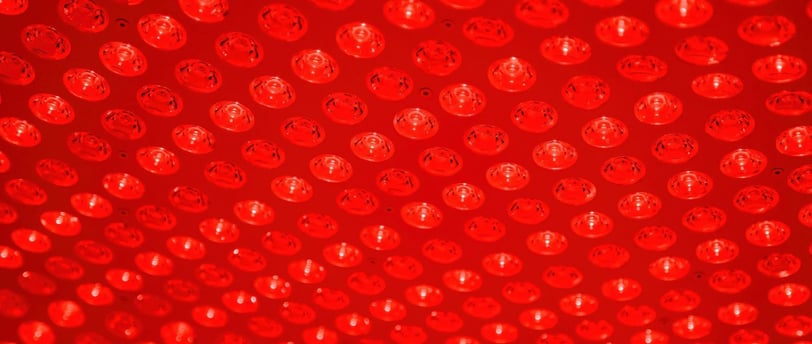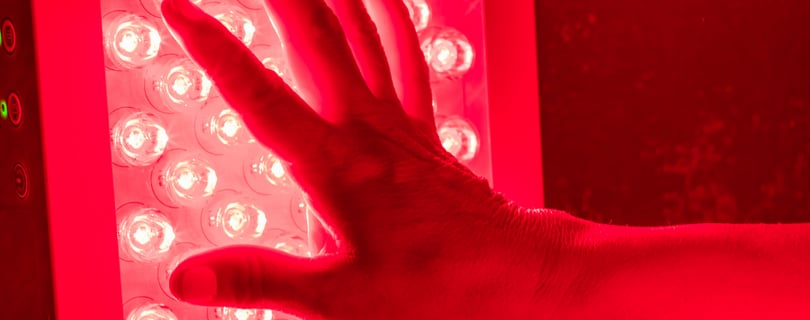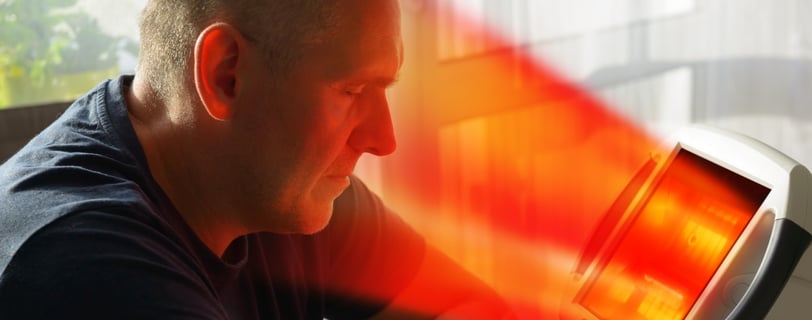Red Light Therapy: Gentle Light, Deep Healing
A Quick Guide to the Science and Benefits of Red Light Therapy for Your Skin, Mood, and More
HOME HEALTHEVIDENCE-BASEDTHERAPEUTIC TOOLSLIGHT THERAPY
6/14/20258 min read


Looking for a natural, non-invasive tool to support your skin, boost hair health, ease seasonal depression, and even help protect your eyes? Red light therapy (RLT) could be the solution you’ve been waiting for. Once reserved for medical settings and high-end spas, RLT is now accessible via home devices, wellness centers, and gyms. Here’s a quick guide to what it is, why it works, and how to choose the right approach.
Buyer Beware: What to Look For
Avoid low-powered or gimmicky products that don’t meet therapeutic thresholds.
Stick to red and near-infrared light. Other colored lights may not have the same evidence base.
Check for safety standards and actual power specs, not just marketing claims.
Safety First
RLT is generally safe, but not for everyone. If you’re photosensitive, pregnant, or on medications that increase light sensitivity, consult your physician first.
More is not always better. Follow manufacturer guidelines — usually 10–15 minutes per area.
Final Thoughts: Not Hype, Just Science
Red light therapy isn’t a miracle — but it is a well-supported, low-risk option for enhancing physical and mental well-being. Whether you're tackling aging skin, thinning hair, mood changes, or chronic pain, RLT offers a compelling, science-backed approach worth considering.
Dr. Young's Amazon Product Picks (coming soon) — Make Life Easier, Not Harder
Below you'll find a carousel of Amazon product links to FDA-cleared red light therapy tools I recommend. I may earn a tiny commission (like, "buy me a coffee" tiny) if you purchase within 24 hours of clicking — but this is really about giving you legit options without the guesswork.
Wellness should be effective, not overwhelming.
Thanks for reading — let me know if you give it a try!


What Is Red Light Therapy?
Red light therapy, also known as low-level light therapy (LLLT) or photobiomodulation (PBM), uses specific wavelengths of red and near-infrared light (typically wavelengths of 660 nm and 810 nm, respectively) to stimulate cellular repair and regeneration. It works by enhancing mitochondrial activity — the “powerhouses” of your cells — which helps fuel natural healing processes.
References
Wileman, S. M., Eagles, J. M., Andrew, J. E., Bowes, S., & Cameron, I. M. (2001). Light therapy for seasonal affective disorder in primary care: randomised controlled trial. British Journal of Psychiatry, 178(4), 311–316. https://doi.org/10.1192/bjp.178.4.311
Lee, S. Y., You, C. E., & Park, M. Y. (2023). Effects of light-emitting diode (LED) therapy on skin: A meta-analysis and systematic review. Skin Research & Technology, 29(2), e13205. https://doi.org/10.1111/srt.13205
Jimenez, J. J., Wikramanayake, T. C., Bergfeld, W. F., & Schachner, L. A. (2024). Efficacy of red light in treating androgenetic alopecia: A randomized controlled trial. Lasers in Medical Science, 39(1), 65–74. https://doi.org/10.1007/s10103-023-03826-9
Xiong, R., Li, Z., Zhang, Y., & Chen, L. (2023). Low-level red-light therapy for myopia control: A systematic review. Optometry and Vision Science, 100(5), 234–240. https://doi.org/10.1097/OPX.0000000000001987
Kim, W., Park, J. H., Lee, S., & Choi, H. (2023). Efficacy of photobiomodulation therapy for rheumatoid arthritis: A meta-analysis. PLOS One, 18(2), e0281090. https://doi.org/10.1371/journal.pone.0281090
Umeda, M., Tsuno, A., Okagami, Y., Tsuchiya, F., Izumi, Y., & Ishikawa, I. (2011). Bactericidal effects of a high-power, red light-emitting diode on two periodontopathic bacteria in antimicrobial photodynamic therapy in vitro. Journal of Investigative and Clinical Dentistry, 2(4), 268–274. https://doi.org/10.1111/j.2041-1626.2011.00071.x
Modena, D. A. O., Ferro, A. P., Guirro, E. C. O., Cazzo, E., & Chaim, E. A. (2023). Photobiomodulation therapy with light-emitting diode in stimulating adipose tissue mitochondria. Lasers in Medical Science, 38(1), 238. https://doi.org/10.1007/s10103-023-03906-y
Hyun, J., Eom, J., Im, J., Kim, Y.-J., Seo, I., Kim, S.-W., Im, G.-B., Kim, Y. H., Lee, D.-H., Park, H. S., Yun, D. W., Kim, D.-I., Yoon, J.-K., Um, S. H., Yang, D. H., & Bhang, S. H. (2024). Fibroblast function recovery through rejuvenation effect of nanovesicles extracted from human adipose-derived stem cells irradiated with red light. Journal of Controlled Release, 368, 453–465. https://doi.org/10.1016/j.jconrel.2024.02.047
Hamblin, M. R. (2016). Shining light on the head: Photobiomodulation for brain disorders. BBA Clinical, 6, 113–124. https://doi.org/10.1016/j.bbacli.2016.09.002
Nairuz, T., Cho, S., & Lee, J.-H. (2024). Photobiomodulation therapy on brain: Pioneering an innovative approach to revolutionize cognitive dynamics. Cells, 13(11), 966. https://doi.org/10.3390/cells13110966
Cougnard-Gregoire, A., Merle, B. M. J., Aslam, T., Seddon, J. M., Aknin, I., Klaver, C. C. W., Garhöfer, G., Garcia Layana, A., Minnella, A. M., Silva, R., & Delcourt, C. (2023). Blue light exposure: Ocular hazards and prevention—A narrative review. Ophthalmology and Therapy, 12(2), 755–788. https://doi.org/10.1007/s40123-023-00675-3
1. Mental Health and Seasonal Affective Disorder (SAD)
Red light therapy has been explored scientifically as a supportive treatment for mental health disorders such as depression and Seasonal Affective Disorder (SAD) for decades now. A 2001 randomized controlled trial published in The British Journal of Psychiatry found that both bright white and dim red light resulted in over 40% improvement in symptoms among participants[^1]. Surprisingly, there was no significant difference between the groups — suggesting that red light, often dismissed as less potent than white light for SAD, may have underestimated power. For many users, including myself, the calming-yet-invigorating sensation of red light feels anything but dim.
2. Skin Rejuvenation
Numerous clinical trials, including a 2023 study in Skin Research & Technology, have shown that red LED therapy improves skin elasticity, reduces wrinkles, and evens out pigmentation by stimulating collagen production and calming inflammation. Adding to this, a 2024 study in the Journal of Controlled Release found that nanovesicles derived from stem cells exposed to red light significantly rejuvenated aging fibroblasts — the key cells behind skin repair — restoring them to a more youthful state and enhancing wound healing in animal models[^2][^8].
3. Hair Growth Support
Several 2024 clinical studies confirm RLT’s effectiveness in treating androgenetic alopecia. One such randomized trial, published in Lasers in Medical Science, reported that red light outperformed green light in increasing both hair diameter and density[^3]. This makes RLT a promising option for those experiencing thinning hair.
4. Eye Health & Myopia Control
Recent reviews in Optometry and Vision Science (2023) suggest that low-level red light therapy (RLT) may help slow myopia progression in children[^4]. A growing body of research supports the idea that RLT can influence deeper physiological systems, including ocular growth and axial elongation, by stimulating mitochondrial function in retinal cells. In stark contrast, blue light exposure—especially from digital devices and LED lighting—has come under scrutiny for its potential to harm eye health. A comprehensive 2023 narrative review in Ophthalmology and Therapy concluded that while typical screen and indoor LED use does not appear to be retinotoxic in humans, blue light can induce photochemical stress in ocular tissues like the cornea, lens, and retina under certain conditions[^11]. The same review found insufficient evidence supporting blue-blocking lenses for disease prevention, although dietary antioxidants and macular pigments (e.g., lutein, zeaxanthin) may offer some natural protection. As the field evolves, red light continues to emerge as a therapeutic ally for eye health, while blue light remains a potential environmental stressor warranting caution.
5. Relief for Chronic Conditions
Preliminary studies suggest RLT may also offer relief for conditions like rheumatoid arthritis. A 2023 meta-analysis in PLOS One found modest but encouraging evidence that RLT can help reduce joint pain and stiffness[^5]. More research is needed, but the potential is significant.
6. Oral Health and Antimicrobial Effects
Emerging research shows that red light therapy can also play a role in dental health. A 2011 Journal of Investigative and Clinical Dentistry study demonstrated that high-power red LED light (650 nm) combined with low concentrations of photosensitizing dyes like methylene blue effectively killed two major periodontopathic bacteria responsible for gum disease[^6]. This suggests RLT could support oral hygiene by reducing harmful bacteria when used as part of antimicrobial photodynamic therapy.
7. Fat Loss and Body Contouring
Recent clinical research published in Lasers in Medical Science (2023) demonstrates that red and near-infrared light therapy stimulates mitochondria within adipose (fat) tissue cells[^7]. This mitochondrial activation may promote processes like lipolysis (fat breakdown) and apoptosis (programmed fat cell death), supporting fat loss and body contouring efforts as an adjunct therapy.
8. Brain Disorders
Red and near-infrared (NIR) light therapy shows promise for brain health, including traumatic brain injury, neurodegenerative diseases, and psychiatric disorders[^9]. Applied to the forehead, it stimulates mitochondrial function, boosts cellular energy, and triggers anti-inflammatory and neurogenic effects. Innovations like LED-based “brain caps” and laser acupuncture are being explored for conditions such as Alzheimer’s and autism. A 2024 review in Cells further highlights photobiomodulation’s potential to improve brain function through mechanisms involving cytochrome c oxidase, calcium signaling, and gene expression[^10]. Emerging evidence supports its use for dementia, stroke, Parkinson’s, brain trauma, and depression, while new delivery methods (intracranial, intranasal) address light penetration limits.
A Brief History of RLT
The therapeutic use of light stretches back thousands of years — ancient Egyptians, Greeks, and Romans practiced “heliotherapy,” harnessing sunlight to treat ailments from skin conditions to mood imbalances. But the modern story of red light therapy begins with Danish physician Niels Ryberg Finsen, who, in the late 19th century, pioneered artificial light treatments for diseases like lupus vulgaris and smallpox. Awarded the Nobel Prize in 1903, Finsen not only experimented with ultraviolet light but also believed that red light could reduce inflammation and scarring. Nearly a century later, NASA's experiments with red LEDs for growing plants in space serendipitously revealed accelerated healing in astronauts — launching a new era of clinical research into red and near-infrared light for tissue repair, pain relief, and more.
I still remember my first session in a full-body red light booth — expecting a red glow, I was met instead with an almost celestial radiance. As the light rushed over my skin and third eye, my thoughts were as follows.. 'This is amazing! Is this even safe?' I felt like this is what it must feel like to be beamed up by aliens. The cautions have always been to cover the eyes, but I'm not going to lie, I've peeked at myself in the booth while the lights are on, (not looking directly at the lights, and only for brief moments) and my eyes are still in perfect condition. Like the ultimate bright light — like a gateway to the heavens. And while the 2001 study used soft red light, what we experience currently are high-powered, full-spectrum immersion. If dim red can lift mood comparably to bright white, imagine what happens when you turn the dial up.
From its ancient roots in sunlight healing to Finsen’s Nobel-winning use of artificial light for smallpox and lupus, and NASA’s discovery of its regenerative effects, red light therapy has evolved into a versatile treatment supported by research for mood disorders, skin rejuvenation, hair growth, fat metabolism, pain relief, oral health, wound healing, and cellular regeneration.


What Red Light Therapy Is Used For


How to Try It: Your Options
Home Devices: Panels, LED masks, and handheld devices are now widely available. Look for:
Wavelengths between 630–660 nm
Verified power density (typically 20–100 mW/cm²)
FDA clearance or similar safety certification
Gyms & Wellness Centers: Many now offer red light booths, especially in premium memberships. These can be a good way to trial RLT, though they may lack the personalization of home use.
Massage Therapy Add-ons: Some massage therapists integrate RLT into sessions. Even a short 10-minute exposure before a massage can enhance circulation and muscle relaxation.
Check out this YouTube video I found that wonderfully elucidates the optimal wavelength quandaries...
EcoTreater Comment Policy
Be civil and respectful. Racism and profanity will be deleted.
Sustainability is Life.
Responsible choices build a better future.
CONTACT US:
JOIN:
info@ecotreater.com
© 2025. All rights reserved.
916-694-6515
